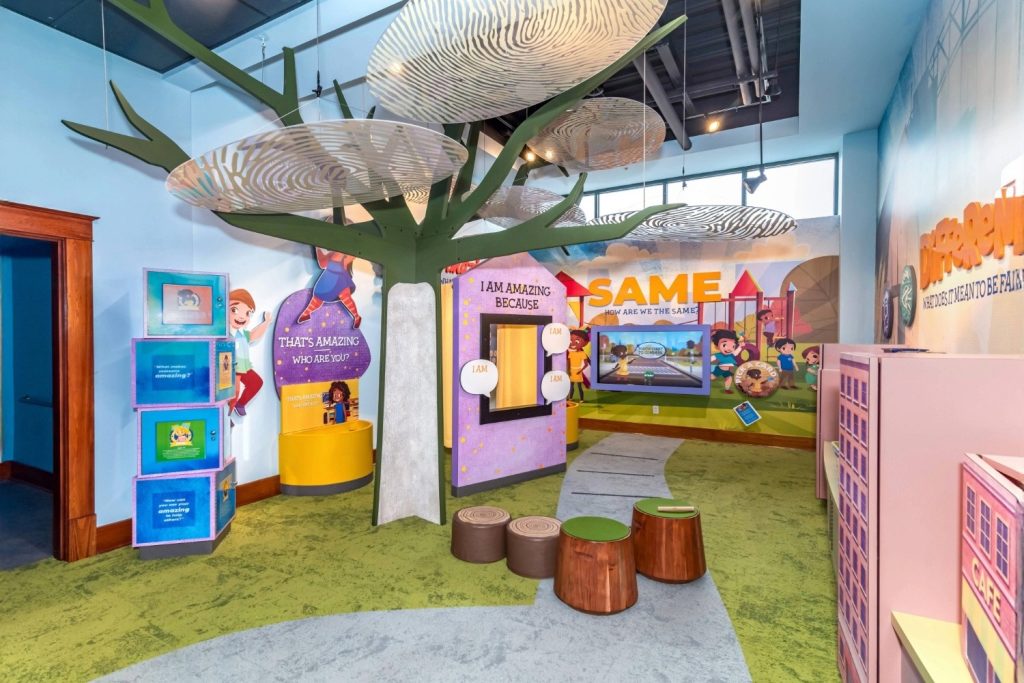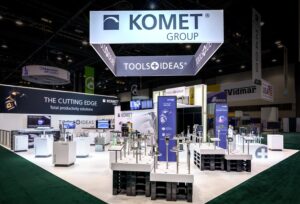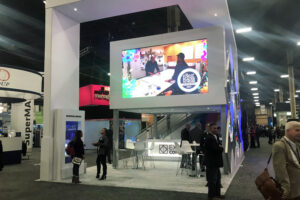When museums set out to create or refresh a gallery, the ultimate goal is to inspire curiosity, spark emotion, and provide visitors with an unforgettable experience. Achieving that requires more than just creativity, it demands a seamless blend of award-winning design, world-class fabrication, and flawless project management.
With multiple stakeholders, tight budgets, and strict deadlines, launching a new gallery or updating an existing space is a major investment in time and money. That’s why value-added design and fabrication are more important than ever. A streamlined, value-added approach can combine creative design services with in-house fabrication expertise to bring rendering to reality. This approach doesn’t just simplify the process, it keeps projects on time, on budget, and ready to create a lasting legacy.
Shared Vision
When a unified team manages both design and fabrication, every detail is guided by a shared understanding. A significant challenge in traditional museum projects is coordinating between separate design and build teams. Value-added services eliminate this gap entirely.
With design and fabrication under one team, designers can conceptualize with fabrication in mind. This ensures that ideas are both imaginative and buildable. This alignment minimizes disconnects between the drawing board and the shop, leading to fewer compromises and better execution of the vision.
This also allows for a single point of accountability, meaning miscommunications are reduced, decision-making is faster, and fewer details fall through the cracks.
Greater Efficiency
Museum projects often face tight budgets and timelines tied to grant cycles, exhibition schedules, or major anniversaries. When designers and fabricators collaborate from the start, realistic budgets are built into the concept phase and not tacked on later. This proactive approach reduces costly redesigns, avoids over-engineered solutions, and ensures every dollar is working toward your project goals.
When design and fabrication teams collaborate from day one, potential challenges are anticipated early and can reduce surprises later in the process. With integrated planning, design, and fabrication, projects can better stay on schedule without unexpected delays that can jeopardize timelines.
Risk Management
Museum exhibits are complex undertakings, involving curators, educators, stakeholders, and contractors. Whether financial or logistical, every project carries risk. Value-added design and fabrication can bring greater flexibility to this complex process while simultaneously reducing these risks.
By engaging a unified team for both design and fabrication, museums can reduce the likelihood of misaligned expectations, change orders, and mid-project disruptions. Adjustments can be made quickly and efficiently because the design and build teams are already in lockstep. With a clear chain of responsibility, risks are easier to manage and resolve quickly while collaboration encourages innovation and keeps the project moving forward.
Long-Term Value
When fabrication joins the conversation from the start, their expertise informs the design from the ground up. This ensures the use of durable materials, smarter engineering, and meticulous attention to detail which goes beyond just opening a gallery on time. It offers peace of mind that your project is completed with quality in mind.
The result is a gallery that not only looks beautiful from the beginning but also stands the test of time through years of visitor engagement. This means that exhibits become more durable, easier to maintain, and more cost-effective to operate over their full lifecycle, delivering operational efficiency that extends far beyond the ribbon cutting.
Superior Experience
At the end of the day, museum projects are about the people who walk through your doors. Value-added design and fabrication keeps the visitor experience at the center of every decision. From storytelling elements to interactivity and accessibility, the comprehensive, unified approach ensures a gallery that engages, educates, and inspires while creating the memorable experiences that museums strive to achieve.
Lasting Legacy
For museum stakeholders, the value of this approach is clear. It provides lower risk, greater efficiency, stronger financial stewardship, and an enhanced visitor impact. Value-added design and fabrication represent more than just a streamlined way to deliver a project, it’s a strategic advantage for museums striving to balance creativity, functionality, and a lasting legacy.
By choosing a partner that offers integrated design and fabrication, you simplify the project process while ensuring that resources are maximized, promises are kept, and that you’re setting the stage for a gallery that resonates with audiences for years to come.









